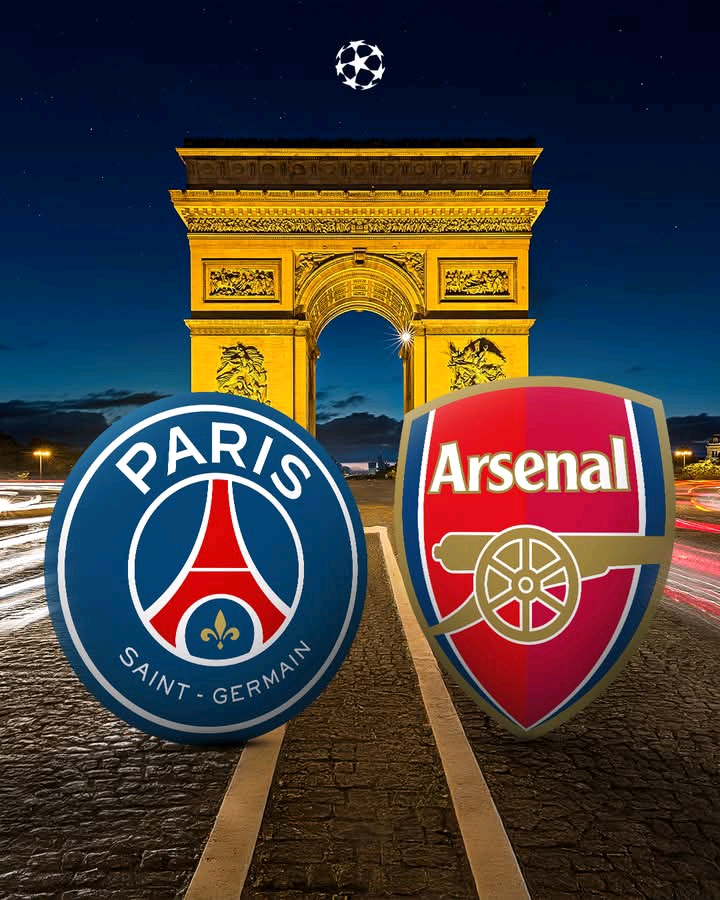A place in the UEFA Champions League final is at stake, but this isn’t just a match. It’s a tactical duel between two ideologies: Luis Enrique’s dynamic verticality versus Mikel Arteta’s structured positional play. With PSG carrying a narrow 1-0 lead into the second leg, every formation shift and in-game tweak could tip the balance.
Predicted Formations
PSG – 4-3-3 (with a false winger and high pressing trap)
Arsenal – 4-3-3 (with inverted fullbacks and a floating eight)
PSG Tactical Setup – Controlled Chaos
PSG’s system under Luis Enrique has been shaped by a commitment to front-foot football. Even with a lead, they won’t sit deep. Instead, expect them to squeeze Arsenal with their trademark high block and controlled central overloads.
João Neves is the engine. With 51 tackles in the tournament, he’s the chief disruptor. PSG press in a 4-1-4-1 without the ball, with Neves sitting just ahead of the back line. But in possession, he pushes high, helping Vitinha and Ruiz overload the left half-space.
Dembélé starts wide right but drifts centrally. That movement pulls defenders inside, creating overlapping channels for Hakimi. Dembélé’s eight goals this campaign aren’t just numbers, they’re a reflection of his ability to ghost into zone 14 when play shifts away.
Out of possession, PSG use a pressing trap. Their pressing line locks onto Arsenal’s double pivot and triggers when the ball reaches wide areas. Neves and Ruiz pinch in, while Kwara and Dembélé close the lanes behind Arsenal’s inverted fullbacks.
Arsenal Tactical Setup – Fluid Structure and Patience
Formation: 4-3-3
Raya
White – Saliba – Kiwor- Skelly
Partey – Rice – Ødegaard
Saka – Trossard – Martinelli
Mikel Arteta will rely on a tactical model built around control, rest defence, and structured possession. In phase one, Lewis Skelly tucks in to create a back three with Jorginho dropping deep, forming a 3-2 base for progression.
Rice is Arsenal’s dynamo. He made six line-breaking passes in the final third in the first leg and leads the team for passes leading to both shots and goals. He plays as a box-to-box connector, switching roles with Partey in rotations.
Trossard Hoffers vertical presence as a false nine, dropping between PSG’s lines to overload Neves. The goal is to force one of PSG’s centre-backs to step out, opening space for Martinelli and Saka to dart in behind.
Ødegaard will look to exploit PSG’s left flank, where Nuno Mendes occasionally gets caught upfield. Expect Arsenal to create a triangle on that side with White/Timber, Ødegaard, and Saka recycling possession before unleashing diagonal switches to Martinelli.
Without the ball, Arsenal defend in a 4-4-2 mid-block, with Ødegaard joining Trossard in the front two. Partey and Rice sit narrow, forcing PSG to go wide and neutralizing Neves’ central influence.
Key Battles
Neves vs Partey– Both are their side’s tempo setters. Neves is aggressive in transition, while Partey offers controlled penetration. Whoever wins this duel could control midfield flow.
Dembélé vs Lewis Skelly– Dembélé’s drifting role can punish Skelly inverted tendencies. Arsenal will need Kiwor to shift wide quickly when Dembélé cuts inside.
Saka vs Nuno Mendes – Arsenal’s most reliable attacking outlet faces PSG’s most explosive full-back. If Saka can pin Mendes back, PSG’s left side will struggle to advance.
Set-Piece Strategy
PSG rely on short corners to reset possession and pull markers out. Arsenal defend with a mix of zonal and man-marking in the box. Donnarumma’s command on high balls will be crucial against Arsenal’s near-post routines.
Final Thoughts
This match is not just a continuation of the first leg—it’s a reset. PSG must balance control and aggression, while Arsenal must chase a goal without losing their shape. Luis Enrique won’t park the bus. Arteta won’t panic. The question is: who adapts faster mid-game?
Should we send you latest update about your favourite sports and team?
Enter you email in the box below and hit the subscribe button to join our teaming 876+ sports community.
